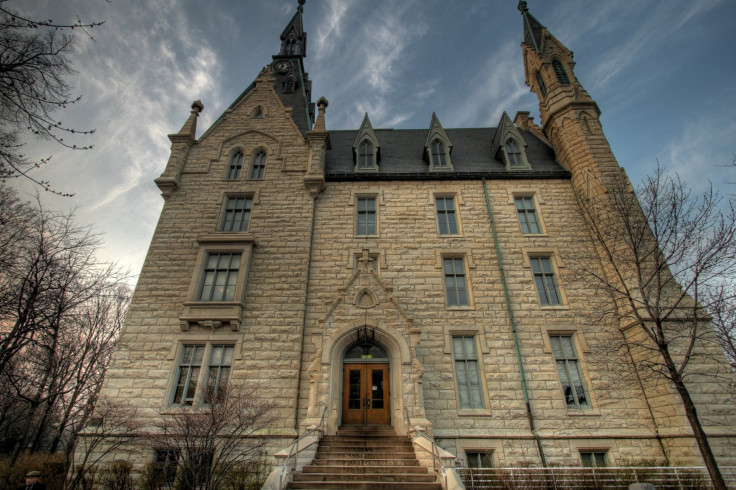Can Universities Recover From Coronavirus? Buyouts, Layoffs, Cuts In Wake Of Pandemic

KEY POINTS
- As much as 75% of the class of 2020 may decide to take a gap year come fall
- Universities were forced to return billions of dollars to students for unused campus services in the wake of coronavirus shutdowns
- The Ceter for American Progress estimates universities need $46 billion in federal aid to weather the pandemic
Major universities across the U.S. are confronting fallout from the coronavirus pandemic, setting up furlough and buyout programs amid expected cuts in enrollment from students turned off by virtual learning and the inability of foreign students to enter the country.
Thousands of new high school graduates were expected to take a gap year rather than show up on college campuses in the fall, perhaps as much as 75% of the class of 2020. Universities also depend on foreign students, who pay full tuition, to foot much of the bill, but President Trump’s decision to restrict F-1 and J-1 visas will dry up that revenue stream.
Northwestern University in Evanston, Illinois, is the latest to announce action, offering buyouts to its 4,000 employees.
“In this context, a voluntary separation plan supplements the cost-containment measures we have taken already, allows us to manage staffing levels to match our outlook and reduces the possibility of potential actions such as further furloughs or involuntary layoffs,” university spokesman Jon Yates told the Chicago Tribune. Yates said as many as 200 employees were expected to take up the offer before the end of the month.
The university, which last year had 21,000 graduate and undergraduate students, earlier projected a $90 million shortfall for fiscal 2020.
The nonpartisan Center for American Progress reported that unless Congress provides more relief, public colleges will face an existential threat. Rutgers University, which serves 71,000 students, was forced to refund $50 million to students for unused services after campuses were closed in the spring. Additionally, the university system lost $60 million in canceled medical procedures at its medical centers and $73 million with the governor’s freeze on state spending.
The University of California System estimated it would need to return $310 million to students for unused services, lose $248 million in medical center revenue and receive 10% less from the state government for the 2020-21 school year.
The CARES Act provided $7.6 billion in federal relief, but losses have far exceeded that figure, American Progress said, estimating $46 billion is needed.
Harvard University in Cambridge, Massachusetts, two weeks ago asked employees to consider early retirement, giving up vacation days and reducing hours to help ease an expected $1.2 billion shortfall in the next two years, hoping to avoid mandatory furloughs and layoffs.
Ohio University began laying off personnel in May as did the the University of Wisconsin system while the University of Missouri System projected it could lose up to $180 million.
“We must plan for severe financial challenges for the next 60-90 days, with forward-looking realism about potential longer term impacts,” UM President Mun Choi said in an email to faculty. He said the losses would necessitate “structural changes.”
The University of Arizona imposed 17%-20% pay cuts and mandated unpaid furlough days through next June.
“In the wake of the Great Recession, only seven states have restored their higher education funding to pre-recession levels.40 That fiscal reality means that public higher education is in a precarious position. Further cuts to this already underfunded system will be devastating,” American Progress said.
© Copyright IBTimes 2025. All rights reserved.




















